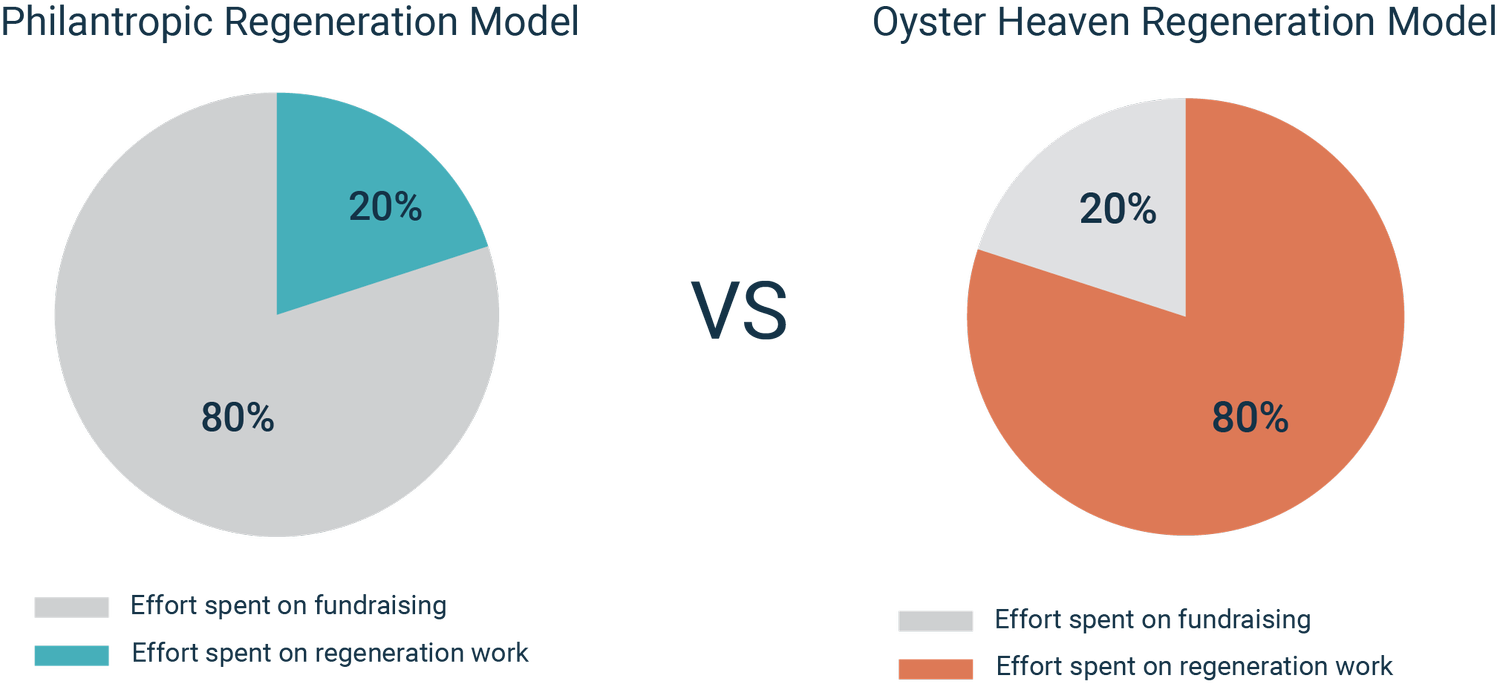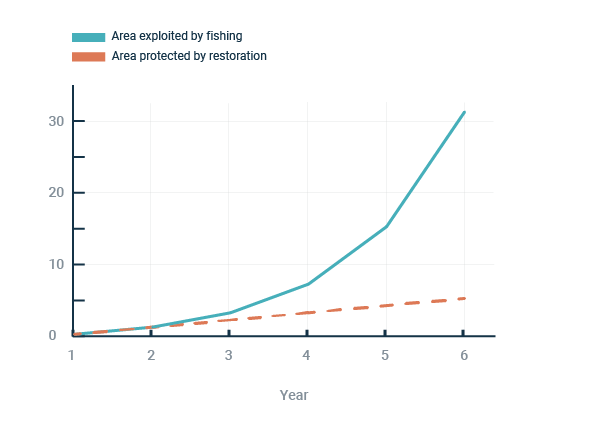Have you ever wondered why it seems like exploitation for profit in the marine environment is outpacing conservation efforts? Well, we have some thoughts to share.
You see, one of the central issues is that the revenue generated from exploitation can be used to increase scale, whereas regeneration in its current format doesn’t generate any revenue to do the same.
Even worse, is that a large portion of a conservation charity’s effort is spent on fundraising, leaving only a small portion for actual conservation work. Any startup will tell you that one of the worst headwinds is getting the need for funding out of the way.

Philanthropy is generally linear, and it’s also funded sequentially, often after the exploitation of another resource.
For example, a fishing company might use a portion of its profit margin, derived from exploitation, to do some oceanic restoration. But, the reality is that 1 million might be generated from exploitation, of which EUR 200,000 is profit, and only 10% of that profit is then spent on restoration. This results in EUR 800,000 spent on exploitation vs EUR 20,000 spent on regeneration.
So, the competition between regeneration and exploitation just doesn’t add up, unless each euro of conservation money is much more efficient at generating value. Sadly this is currently not very likely.
Even if exploitation and regeneration had the same budget in year one, because of the way their business models work, the regenerator would quickly become outcompeted. This can be best seen with an incredibly simplified analogy of a fisherman vs a regenerator:
The fisherman goes out with 200,000 euros, buys a fishing boat, license, and equipment, catches lots of fish, sells them, and makes enough money to buy another fishing boat and equipment, thereby doubling their impact.
On the other hand, the regenerator is given 200,000 euros, obtains the legal permissions and buy-in to protect an area of important coastline and do some restoration work, but then needs to go back to funders to search for more. The impact of the regenerator does not double, but it repeats itself each period.
As you can see from the diagram, below, things quickly start not looking great in the competition for the regenerator:
So, how can we make marine regeneration behave in a manner more similar to resource exploitation?

The answer is simple: we need to start accounting for the value that regeneration brings (there is a whole lot of it that we describe in other blogs) and selling that value to buyers that need it.
Once we can do that, the business model for regeneration fundamentally changes. No longer will they have to go out searching for funding each year, but instead, the revenues from the first reef will fund the next three, then the next nine, and so on.
This creates a model that can compete with exploitation, as they are now both enjoying the same business model characteristics.
This is not fantasy, this is what we are doing right now.
